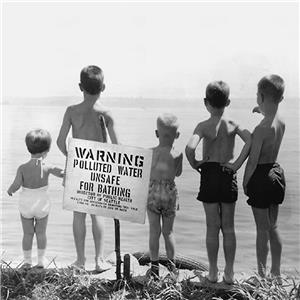On September 9, 1958, western King County voters approve a scaled-back plan for the Municipality of Metropolitan Seattle. The new agency is authorized to build and operate regional sewage treatment and water quality facilities to address the worsening pollution of Lake Washington and other local waters. A broader mandate had failed in March 1958.
The first plan for Metro included authority for transit and comprehensive planning to contain suburban sprawl, but its approval required dual majorities in Seattle proper and in the rest of its service district. Although the first referendum passed in Seattle on March 11, 1958, it was killed in the suburbs by lack of a mere 500 votes.
Led by James Ellis, Metro backers regrouped by redrawing the service district boundaries to exclude the more recalcitrant South County precincts and by focusing on the most visible problem, the poisoning of Lake Washington and other local waters with human and industrial waste. The revised plan carried Seattle by 55,000 to 40,000 votes on September 9, 1958, and it won by an even larger suburban margin of 15,000 to 7,500.
The federated Metro Council was empaneled the following month under the chairmanship of Seattle attorney C. Carey Donworth, and it retained Ellis as the agency's bond attorney. Metro had made substantial progress in cleaning up Lake Washington by 1964, and the successful effort made continuing improvements in subsequent years. Metro expanded countywide in 1972 when voters gave it authority for a regional bus system.
Federal District Judge William Dwyer found Metro's federated Council membership to be unconstitutional in 1990, and voters approved its merger with King County in 1992. The agency ceased to exist in 1994.

